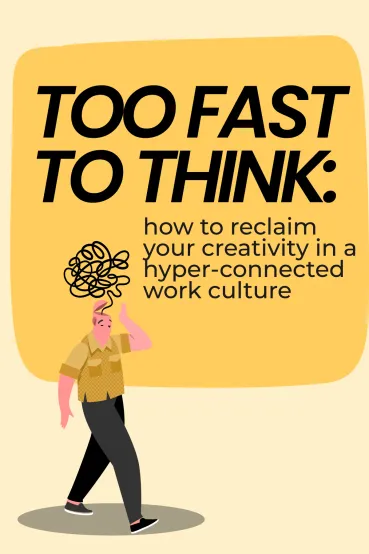
Too Fast to Think
Brief Summary
“Too fast to think” provides you with advice: if you want to be creative, step away from the technological approach and let your brain wander freely. Give your thoughts time to flow, and you'll see that new ideas appear much more often.
Key points
Key idea 1 of 6
We live in a world that is constantly evolving, offering new opportunities and twisting us into a whirlwind. To have a chance to succeed in this changing reality, we should learn to adapt. Unfortunately, there is no educational institution that will teach you this.
Institutions of higher education teach only theory, bypassing a creative and constructive approach. There is nothing wrong with this emphasis on the theoretical base of narrow disciplines. However, in this way, graduates of universities and colleges do not learn to use their own creativity as a tool in the further field of activity. In turn, the creative potential of former students is not revealed.
A famous interior designer, Vanessa Brady, noticed that design colleges usually don't teach personal finance. This is explained by the fact that this course does not relate to specialized subjects within the field of design. By not giving their students basic knowledge of business, institutions of higher education stand in the way of their creative development.
It also happens that universities ignore the importance of communication. We have already learned that in recent years the ways of communication among young people have changed thanks to the influence of social networks and the media. In today's world, people primarily communicate through messages and emojis, with younger generations using emojis even more frequently.
Among youth, it is text messages that are preferred over calls. When you dial a subscriber's number, you may be taking away their chance to engage with you at a time they find convenient. The lack of communication "in the moment" when both people are present during the dialogue significantly changes their interaction and affects what people say to each other.
John Suler called this phenomenon "toxic disinhibition." This stems from the fact that a person without a physical opponent in their presence is capable of saying and writing things they wouldn't express in a face-to-face encounter. The absence of an interlocutor in front of you lowers our brakes, we feel the freedom of speech and are able to say words that can significantly offend the person with whom we are communicating.
The task of the education system is to use the learning methods that could teach young people to interact with each other without using the Internet.
FAQ
You may also like these summaries











